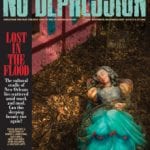Neil Young – “Music just takes you wherever you want to go”
On consecutive August nights at Nashville’s Ryman Auditorium, Neil Young performed the entirety of his new Prairie Wind with close to three dozen musicians coming and going to fulfill the roles they played on the original recordings. Then, after a brief intermission, he played a second set of songs from his career that fit the mood.
Whether his expansive song introductions were due to the fact that Jonathan Demme was filming for a forthcoming theatrical and DVD release, or simply because Young was feeling very comfortable in his own skin, was hard to say. But there wasn’t a dry eye in the former home of the Grand Ole Opry after Young’s concerts. They were as much a career touchstone as his Rust Never Sleeps shows had been decades ago.
Prairie Wind is an acoustic-based collection of introspective songs recorded in Nashville, but that does not simply place it third in a trilogy of similar albums that began with 1972’s Harvest and continued with 1992’s Harvest Moon. Certainly those two discs brought Young his greatest commercial successes in this mode, but the exceptional Comes A Time (1978), as well as the spotty Old Ways (1985) and the sadly overlooked Silver & Gold (2000) were also cut from the same cloth. But these new songs employ different musical colors: the pastel shadings of a string section (as opposed to heavier-handed previous attempts), the muted touches of horns, a spiritually evocative choir.
And while Young’s longstanding lyrical themes about nature and relationships are present, they’ve evolved. The dangers to the environment now appear more pressing; the songs of love and friendship are written by a man who knows he’s no longer “24 and there’s so much more.” In fact, with his 60th birthday in November, Young is closer to being the old man in his legendary song than the observer. His three kids have now all left the nest, his father died in June, and this past spring he survived a potentially life-threatening medical condition.
At noon the day after the second show, Young arrived in a black cowboy shirt for an hourlong chat that scotched any notion of him being a recalcitrant interview subject. In fact, he was sincere, open and giving — just like his new songs.
NO DEPRESSION: Most of Prairie Wind was recorded right here in Nashville, wasn’t it?
NEIL YOUNG: It was all recorded here, yeah, at the old Monument Studios. It’s now called Master Link. Used to be a church and a Confederate Hospital — a Confederate morgue in the Civil War. It was a hospital for a while. But mostly it was a church. And then it became Monument Recording Studios, where [Roy] Orbison recorded everything. Now, it’s Master Link.
I’m actually trying to put together a small group, or maybe even just one individual with myself, to purchase it and preserve it. But we haven’t been able to do it yet. It’s starting to be surrounded by high-rises and everything. I’d kind of like to see it come back to looking like the old church and still be the recording studio, but look like the old church on the outside.
ND: You first recorded in Nashville more than 30 years ago for the Harvest album. What motivated you to come back to record Prairie Wind?
NY: Well I think Ben Keith [Prairie Wind co-producer and Young’s longtime pedal steel player] said, “Why don’t you just come and record here. Everybody’s here. And it always worked before.” And I didn’t have any songs. I only had one song really; I just had “The Painter”. And a little bit of the melody to “No Wonder”. But eventually, I said, ‘You know…I’m going to come to New York to induct Chrissie Hynde into the Rock and Roll Hall of Fame in March. And I’ll come by Nashville on the way back and we’ll do some recording. And we’ll just see what happens.’ And, you know, everybody’s here. All my friends are here. So it was easy to get all the old guys back together again, the ones that are still here.
ND: During the last two nights, you performed concerts featuring the Prairie Wind album at the Ryman Auditorium, the former home of the Grand Ole Opry. You were mentioning the studio being a church — that is a church where we were the last couple of nights.
NY: That’s right. It’s gotten to be a big old music church. It’s like being inside an acoustic guitar, that place. So it’s a wonderful, wonderful place. And it has so much of a hallowed kind of feeling to it, and the history, obviously, it speaks for itself. So we wanted to pay our respects to our roots, and to the great musicians that have gone before us, and to kind of re-establish the connection.
I mean, I’ve got nothing against Opryland, but it’s not the Grand Ole Opry to me. The Ryman is starting to be surrounded by high-rises and everything now, but it’s still — it’s all there. It’s all there with, you know, Tootsie’s and the other bars right down there in the back alley that you can go from a honky-tonk right into the Ryman. It’s only like 100 feet from the barstool to the stage, you know. So it’s a fantastic place.
ND: The first song on Prairie Wind is “The Painter”. The character is a woman. Was Joni Mitchell an inspiration for that in any way?
NY: Actually, my daughter is. My daughter is a painter.
ND: Do you paint?
NY: No. I’m a terrible artist. (laughs)




